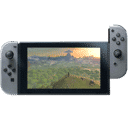
Summary:
Dragon Quest VII Reimagined steps into the spotlight with a fresh trailer that shows off a charming diorama art style, a streamlined scenario, and a new episode that reunites the party with an older Keifa. Launching on February 5, 2026, the adventure arrives on modern platforms including Nintendo Switch 2, where it’s offered as a game key card, and on PlayStation 5 and Xbox with digital and retail options varying by region. The footage emphasizes expressive character animation, revamped pacing, and classic command-based battles that feel brisk without losing their tactical snap. If you’ve waited for a modern take that respects the original’s heart while trimming friction, this release draws a clear line: clearer routes through early hours, richer environmental storytelling, and quality-of-life touches that let exploration and turn-based strategy shine. Below, we break down the trailer’s most telling moments, the confirmed launch plan, performance expectations on Switch 2, how the reworked structure changes early progression, and practical buying tips—so you can step into Estard with a plan on day one.
What the new Dragon Quest VII Reimagined trailer confirms
The latest trailer doesn’t shout; it invites. From the opening shots of Estard’s coastal edges to the warm tilt-shift streets, we get a feel for the diorama presentation that defines this reimagining. Character motions are snappier, facial expressions read at a glance, and the camera favors angles that make scenes feel like a living tabletop. More important than the look, though, is the cadence. Cuts favor forward movement—entering a location, triggering a scene, transitioning to combat—suggesting a structure that reduces downtime between beats. You can see how NPC conversations channel toward key steps without losing side flavor. That sets expectations for a smoother opening act, quicker access to party tools, and clearer handholds through early puzzles. The vibe is confident and approachable, signaling a version designed to welcome newcomers while still giving returning players plenty of texture to enjoy.

Release date and platforms—what’s locked in for day one
Mark the calendar: February 5, 2026. That’s the confirmed launch date, and it lines up with Square Enix’s winter window for major role-playing releases. Availability includes PlayStation 5 and Nintendo Switch 2, with Xbox and PC presence varying by territory and retailer messaging. On Switch 2 specifically, listings point to a game key card rather than a traditional cartridge, which means you’ll redeem a code and download the software. For some, that’s a small wrinkle; for others, it’s an easy way to skip disc swapping and stay all-digital while still having a box on the shelf. If you plan on traveling or keeping multiple games ready, check storage in advance. The takeaway is simple: the date is fixed, the platforms are modern, and you won’t need legacy hardware to experience this reimagined journey at launch.
The diorama art style—why it works for Dragon Quest VII
Dragon Quest has always thrived on clarity: bold silhouettes, readable monsters, and clean UI. The diorama approach doubles down on that philosophy. Environments look handcrafted, with depth-of-field gently guiding your eye toward the path forward. Towns feel layered, like miniature sets with practical lighting and chunky props. This aesthetic makes casual exploration more delightful—you’re not just passing through areas; you’re touring a lovingly assembled world. It also fits the series’ storytelling, where big emotions often play out through small gestures. The tilt-shift treatment frames characters like figurines you’ve known for years, and that familiarity lets moments land harder. It’s playful yet precise, traditional yet modern, and it gives this reimagining a visual identity that’s instantly recognizable as Dragon Quest while feeling fresh to anyone who last played the 3DS remake years ago.
The streamlined scenario—how pacing changes the early hours
The original journey famously took its time before the first battle. This version trims friction with a reworked scenario that ushers you into meaningful decisions sooner. The goal isn’t to bulldoze context—it’s to prioritize momentum. Expect cleaner signposting in the Shrine of Mysteries, quicker access to the mechanics that define the loop, and fewer steps between “I think this is important” and “I’m doing the important thing.” That matters because Dragon Quest’s charm lives in exploration and tactical battles. By shaving delays without losing worldbuilding, this reimagining respects the story while letting you engage with systems earlier. The result should be a steadier flow: conversation, discovery, skirmish, reward—then onward, rather than a long prelude that tests patience before showing the good stuff.
The new episode with an older Keifa—why this addition matters
The standout reveal is a fresh episode that brings you back to a familiar face: Keifa, seen here as an adult. Beyond the headline moment of reuniting with an old friend, this addition hints at deeper character arcs and alternate viewpoints on pivotal events. It also signals a thoughtful approach to “reimagining”—not just rearranging chapters, but adding material that enriches relationships without rewriting the series’ DNA. For veterans, this creates new touchpoints to rediscover favorite beats. For first-timers, it neatly frames themes of legacy and choice, giving the journey more emotional texture. Expect this episode to weave into the main route in a way that feels earned, not bolted on, with new areas and enemy arrangements tailored to where the party is by then.
Combat and party growth—classic command-based play with modern snap
Command-driven battles remain the backbone, and that’s the right call. The interface favors quick comprehension: clear menus, readable turn order cues, and damage feedback that pops without visual clutter. The diorama style helps here too, giving enemy formations presence while keeping the field tidy. Modernization shows up in small wins—faster transitions into battle, streamlined victory summaries, and skill descriptions that tell you what you need without jargon. Party development keeps the satisfying cadence of learning new abilities at a steady clip, letting you experiment across roles early. If you enjoy shaping a squad over the long haul, this release gives you that rhythm while cutting dead air, so every session—whether thirty minutes or three hours—feels like progress.
Exploration, puzzles, and the Shrine of Mysteries—cleaner routes, richer payoffs
Dungeon and field layouts lean into readable landmarks, with puzzle steps that stack logically. Environmental clues—statues, inscriptions, sightlines—push you toward the next action rather than sending you on guesswork detours. It’s the kind of design that respects your time. The Shrine of Mysteries benefits most: the path to time-hopping feels cohesive, with clearer feedback when you’re on the right trail. Rewards tie into both story and function, nudging you to poke corners without turning every room into a scavenger hunt. You still get that satisfying click when a mechanism opens, but the lead-up is smoother, making each unlock feel like momentum rather than a breather from backtracking.
Performance and format on Nintendo Switch 2—what to expect at launch
On Switch 2, the emphasis is on stable performance and crisp presentation in handheld and docked play. While hard numbers can vary by mode, the art direction carries well on portable screens, and the UI reads cleanly even at an arm’s length. With the game available as a key card, plan for a full download; check your storage and consider tidying old captures or moving larger titles to a card if needed. The upside is instant access without swapping media and faster patching when updates arrive. For on-the-go adventuring—quick dungeon runs on a commute, a boss attempt before bed—the setup is tailored to hop in, make progress, and hop out without friction.
English voice acting and presentation—adding warmth without crowding scenes
The trailer showcases English performances that complement the series’ trademark humor and heart. Delivery leans expressive without becoming theatrical, matching the diorama staging and the script’s lighter beats. Voice lines sit clean in the mix, leaving room for effects and the score to breathe. That balance matters in a game where character moments often carry the weight between set pieces. It also helps newcomers attach to the cast quickly—tone, timing, and friendly banter make a big difference in the first hour. Expect the English track to be a first-class option alongside text clarity, with localization that honors wordplay and keeps the overall rhythm bright and readable.
Who should play this version—veterans, newcomers, and everyone between
If you loved the original but bounced off the lengthy prologue, this is the moment. The reimagining keeps the soul intact while smoothing rough edges. If you’re a newcomer curious about why Dragon Quest has such staying power, the structure here welcomes you with pace, charm, and tactical battles that don’t demand encyclopedic knowledge. If you’re somewhere in between—dipped a toe on 3DS, drifted away—consider this an invitation to see what the fuss is about on hardware you already use. It’s a modern, friendly entry point into one of the series’ most sprawling adventures, tuned for the way we play today.
Buying smart—regional notes, key card tips, and storage planning
On Switch 2, the key card format means you’ll redeem a code to download the game—handy if you prefer a shelf box but live digitally day to day. Check the back of the package for region notes, especially if you import. If you’re juggling space, move completed epics to a microSD and keep your current rotation local. Pre-orders sometimes include small extras; nice-to-have, not need-to-have. On PlayStation 5, physical and digital options are widely supported, and save management is straightforward. Whichever platform you choose, the only real homework is storage: make sure you’ve got room so launch night is play time, not cleanup time.
How the reworked structure supports shorter sessions without losing depth
Short sessions thrive on visible progress. The updated flow trims long stretches of preamble and isolates objectives into digestible chunks. Think “enter area, solve a layered puzzle, clear a skirmish, snag a reward,” with each step feeding the next. Save points and autosaves are positioned to respect breaks, and travel shortcuts reduce repeat traversal. The net effect is that a half hour can accomplish something tangible—new ability, unlocked room, advanced quest—while longer sittings still reward patience with multi-stage arcs and chunky upgrades. It’s the best of both: snackable progress and satisfying marathons, depending on your evening.
Music, ambience, and the feel of places
Audio does heavy lifting in a diorama world. The score leans melodic and welcoming, letting combat cues snap into focus without harsh transitions. Ambient layers—coastal wind, market chatter, mechanical hums in ancient sites—add dimension without clutter. This is where the tilt-shift aesthetic and sound design meet: your eye reads a miniature; your ear convinces you it’s alive. Together they keep the adventure cozy during quiet stretches and rousing during boss spikes, giving each location a mood you’ll remember when you think back on the journey.
Accessibility touches that quietly improve the journey
Small features make a big difference. Clear text sizing, color contrast that favors legibility, and option toggles to tune control sensitivity all lower the barrier to entry. Tutorials surface when relevant, not all at once, and tooltips fade once a mechanic clicks. There’s a sense that the team wants you to play how you like—button prompts that respect preferences, camera behavior that stays out of the way, and menu organization that puts frequent actions a single tap deep. It’s subtle, but over dozens of hours, these touches add up to a game that feels like it’s rooting for you.
Why turn-based feels fresh again here
Turn-based systems shine when choices are legible and outcomes are satisfying. The reimagined combat benefits from readable animations and quick resolution, keeping pace brisk without bulldozing strategy. Positioning and ability timing still matter; status effects still set up clever swings. Yet there’s less waiting around for your turn to come back. The combination of visual clarity, sound cues, and tuned effects gives each command a pleasant snap. It scratches the tactical itch and makes experimentation low-risk—try a new skill, feel the result, bank the lesson, and carry it forward.
The heart of the journey—friendship, time, and responsibility
Beyond systems and trailers, Dragon Quest VII lives on its themes. Friends stumble into a destiny too big for their age, then grow into it by choosing kindness over fear. Time travel frames the cost of inaction and the ripple of small, brave decisions. The reimagining’s additions—especially the new episode—reinforce those ideas with perspective you can only earn by looking back. It’s not a different message; it’s a clearer signal. When credits roll, the feeling that lingers isn’t about numbers on gear. It’s about places restored, people helped, and the quiet pride of carrying a world on your shoulders and setting it down in better shape than you found it.
Before launch—what to do now
If you’re in, set a reminder for February 5. On Switch 2, confirm storage, and if you like boxes, watch for the key card at your preferred retailer. On PS5 or Xbox, sort pre-orders if you want preload. If you’re on the fence, rewatch the trailer with an eye for pacing: how quickly scenes transition, how briskly battles pop, how readable UI elements are at a glance. Those are the signals that define the day-to-day feel. If those click for you, the rest—art style, soundtrack, familiar monsters—will likely fall into place the moment you step onto Estard’s shore.
Conclusion
Dragon Quest VII Reimagined arrives with a clear promise: the timeless spirit intact, the path to it made kinder. The diorama style charms, the structure respects your time, and the new episode adds warmth without crowding the original arc. With February 5, 2026 set and modern platforms in the mix—including Switch 2 via key card—you can plan the journey with confidence. If you want a role-playing adventure that feels classic in the best ways and modern where it counts, this is the door to walk through.
FAQs
- Is the release date confirmed?
- Yes—February 5, 2026 is the stated date across official channels and partner announcements.
- Which platforms are supported?
- PlayStation 5 and Nintendo Switch 2 are confirmed, with additional platforms noted by regional outlets and listings.
- What’s new in this version?
- A streamlined scenario for faster early progression, a diorama art style, and a new episode featuring an older Keifa.
- Does Switch 2 use a cartridge?
- Retailers list a Switch 2 game key card, meaning a boxed code that redeems a download rather than a traditional cart.
- Is combat still turn-based?
- Yes, classic command-based battles return with quicker transitions and cleaner readability.
Sources
- State of Play Japan November 2025: all announcements, PlayStation Blog, November 11, 2025
- DRAGON QUEST VII Reimagined — Official Game Page, Square Enix, November 2025
- Video: Dragon Quest VII: Reimagined Reveals A Familiar Face In New “Follow-Up” Trailer, Nintendo Life, November 2025
- Dragon Quest VII Reimagined Follow-Up Trailer appeared at November 2025 State of Play, RPG Site, November 12, 2025
- Dragon Quest 7 Reimagined Shows Off Its Cutesy Diorama Style, Push Square, November 2025
- DRAGON QUEST VII Reimagined — Nintendo.com (NL), Nintendo, November 2025
- Dragon Quest VII – Reimagined (Gamekeycard), Budgetgaming, November 2025
- Dragon Quest VII Reimagined + Pre-Order DLC (Switch 2), Nedgame, November 2025
- Dragon Quest VII Reimagined krijgt nieuwe trailer, intheGame, November 11, 2025
- How the Dragon Quest VII Reimagined team streamlined its main scenario, Game Informer, November 10, 2025














